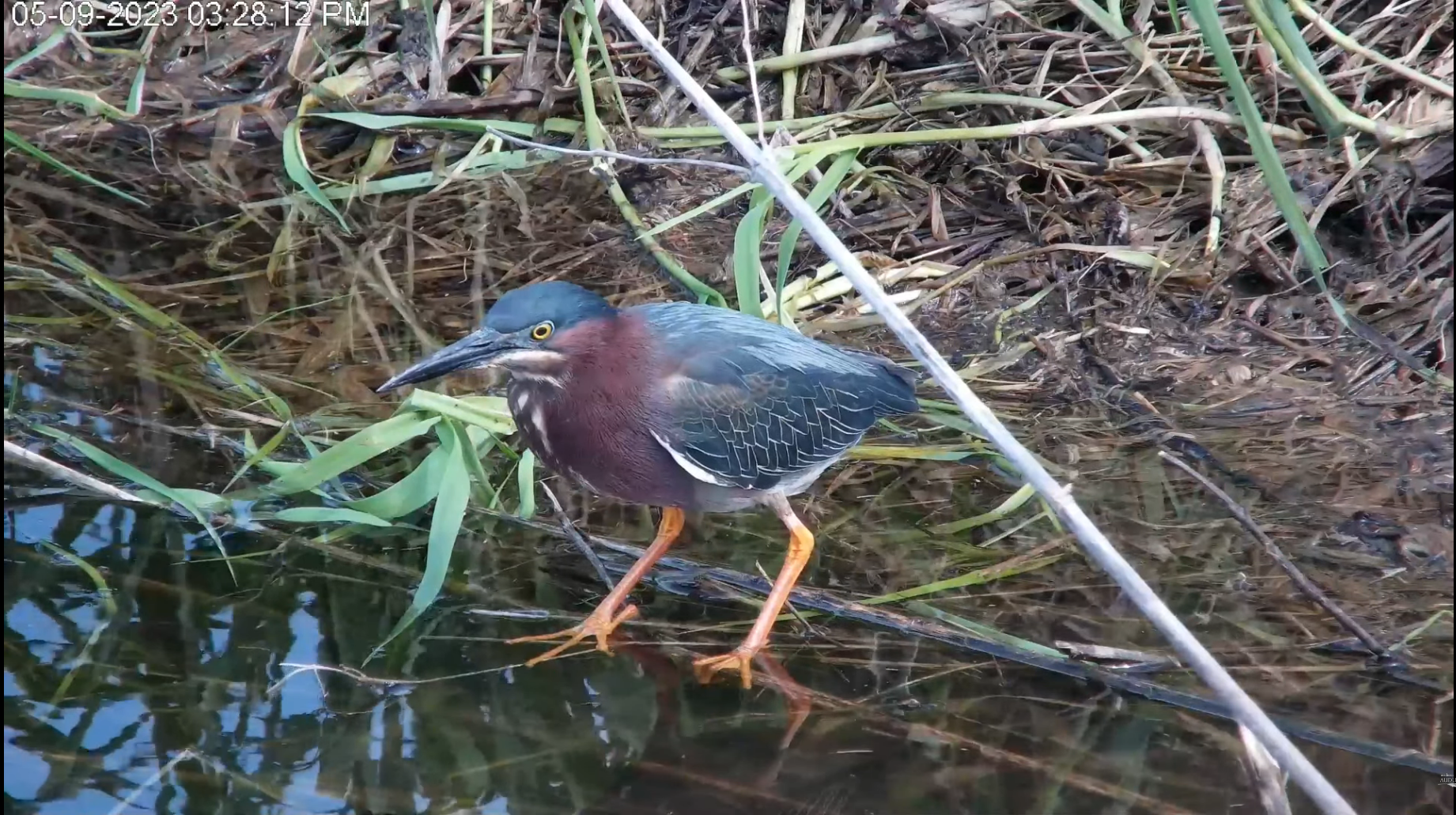Hundreds of people use Goose Pond Sanctuary annually to experience nature through field trips, volunteer events, and independent exploration. Thanks to charismatic staff and an excellent property, the smiles and thoughtful expressions of visitors are standard. But if you’re lucky, you get to see someone really lose it over some novel (and usually unexpected) event. I’ve seen it twice so far this year. The first was when Emma Raasch spotted her first Yellow-headed Blackbird, and the second was when Prairie Partner intern Katie Porubcan and I had a close encounter with a Green Heron.
A Green Heron fishing (photo by Arlene Koziol).
Green Herons are found occupying a huge number of wet habitats including creeks, canals, floodplains, lakes, ponds, mangrove swamps, and almost anything else with a shoreline. They also require some thick trees (aspen, boxelder, willow, etc.) or shrubs nearby which they use for cover and nesting. Despite their relative commonness, Green Herons can be difficult to observe on account of their secretive nature and distaste for human encounters. In general, you are much more likely to see one flying past or by accidentally flushing it rather than spotting one going about its normal heron business. I have a particular affinity for Green Herons because of their carrot-colored legs in breeding season, knack for appearing silly and handsome simultaneously, and ability to use fishing lures.
A Green Heron is spotted on the Pond Cam in May 2023 (captured by Peter Leege).
Because Goose Pond lacks the woody cover required for Green Herons, there are only 24 Green Heron eBird observations recorded at the hotspot since 1961. Three flew past me and through the Jackson Cover Unit on May 23. I reported the observation to eBird and claimed the new Goose Pond high count for Green Herons originally set in 1995 (again, underscoring their uncommonness here). A few days later, I flushed one bird from a nearby wild plum thicket.
Katie and I approached that same plum thicket on May 29 to pull a small patch of garlic mustard that it harbored. We flushed a Green Heron on our approach without thinking much about it. While we worked and chatted in the shade, a nearly silent bird flew in and perched right above us. Because the thicket was dense with new green leaves, it took me a minute to find a viewing hole up and through the foliage. I pointed excitedly and mouthed, “Green Heron is back.” After a minute, Katie found her own window. “I SEE IT,” she whisper-yelled and gripped a nearby plum trunk for stability.
Green Heron nest at Goose Pond in 2023 (photo by Graham Steinhauer/Madison Audubon).
Unfortunately we had to flush the bird again or we would still be in that plum thicket to this day. We investigated a shabby collection of sticks on our way out. Like other herons, the Green Heron doesn’t make the most impressive looking nest, but we determined that this one was freshly built based on the loose but intact scaffold.
A week later, I spied on the thicket with binoculars. An adult was on the nest with its neck extended, and it was looking straight back at me. I turned around and have left the area undisturbed since. We plant wild plums, elderberries, and dogwoods for shrubland birds like Willow Flycatchers and Brown Thrashers, but I hadn’t considered who else might be hiding among the branches.
Written by Graham Steinhauer, Goose Pond Sanctuary land steward
Cover image by Arlene Koziol. A Green Heron with a rusty-colored neck, teal cap, iridescent green wings, and yellow legs is perched on a log in a swampy area. The bird looks to the right as though watching something swimming in the pool below.








